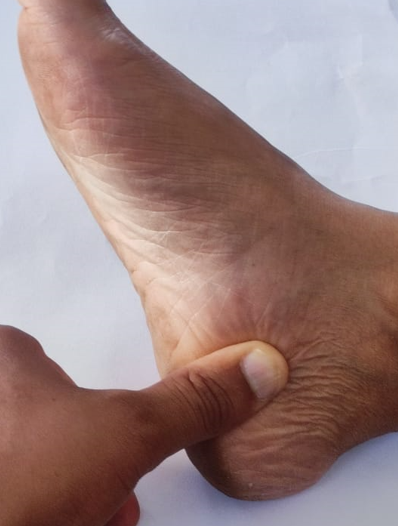Operating Time
Mon - Sat 5pm - 9pm
Address
Sadashiv Multispeciality Clinic, Rajeev Nagar Road, Vidyanagar, Hubballi
Contact Info
+91 93539 37425

Do you feel pain in your ankle or heel first thing in the morning? Is the first step you take in the morning the most painful one? Do you experience heel pain when standing for long durations? If touching the inner side of your foot causes pain, then you are likely suffering from a common heel pain condition called plantar fasciitis. Read on to learn more.

Do you feel pain here??
Plantar fasciitis affects approximately one in every 1,000 people worldwide, impacting both men and women, especially those in the working population. Common causes of this pain include standing for prolonged periods, being overweight, running on uneven surfaces or with improper footwear, and engaging in work-related weight-bearing activities while wearing shoes with poor shock absorption. This condition results from repeated irritative trauma to the sole pad of the foot, making it a degenerative disease. Typically, individuals endure plantar fasciitis for six months or more before consulting a primary care physician.
What are the treatment options?
More than 85% of people suffering from this type of heel pain find relief through medications and exercises. Your doctor will first rule out other serious causes of foot pain, such as fractures, Morton’s neuroma, ganglions, or sprains, before initiating treatment.
Treatment options for plantar fasciitis typically include simple measures that can be implemented at home or in the workplace:
60 seconds exercise(Repeat 10 times each day)

For cases that are refractory to these measures, consulting with your doctor is advisable. Additional treatment options include:
The key to treating plantar fasciitis is continuous follow-up with your physician and lifestyle modifications. Over the course of a year, microtears and degeneration in the sole can reverse, leading to significant improvement for most patients.
Subscribe to get the latest posts sent to your email.